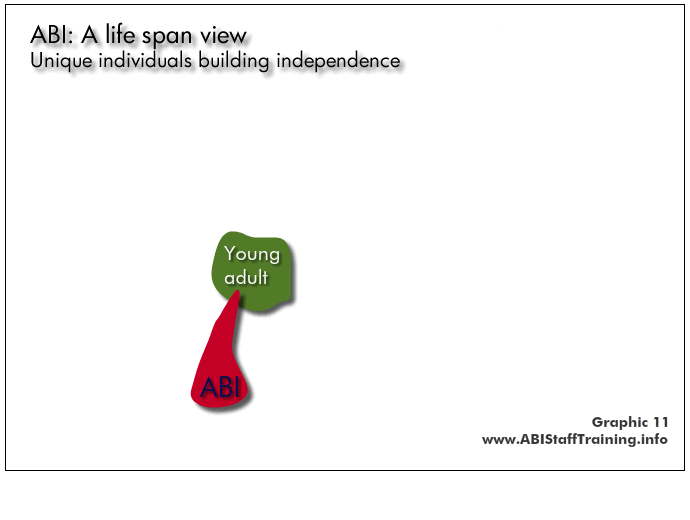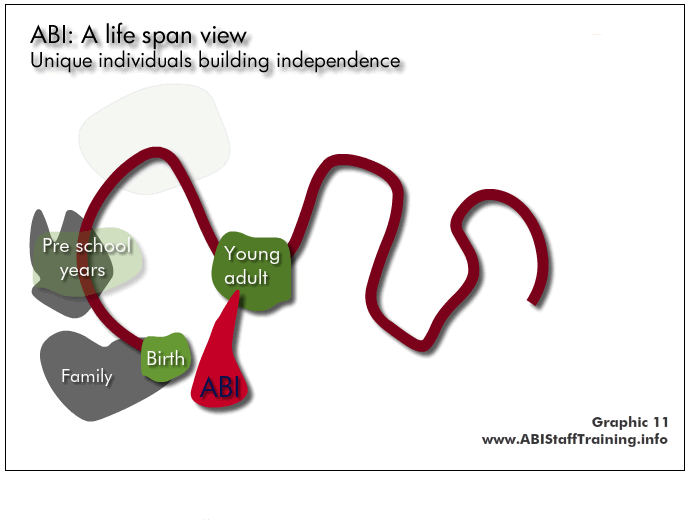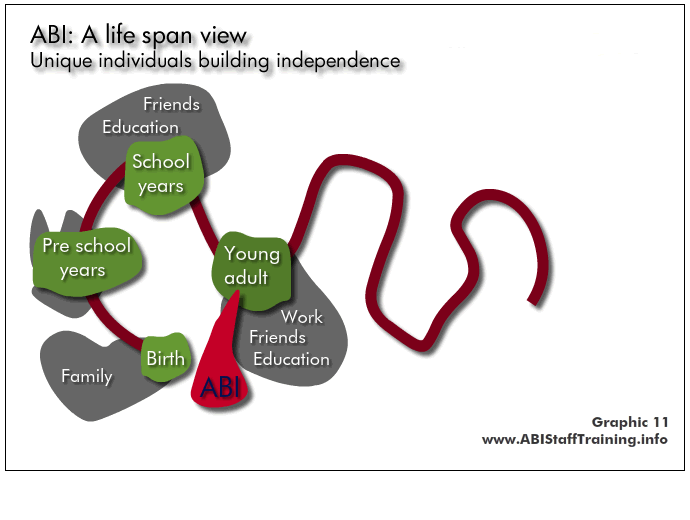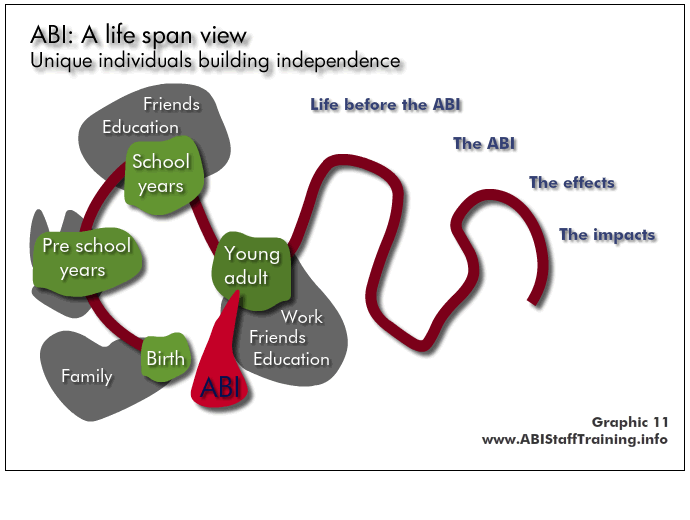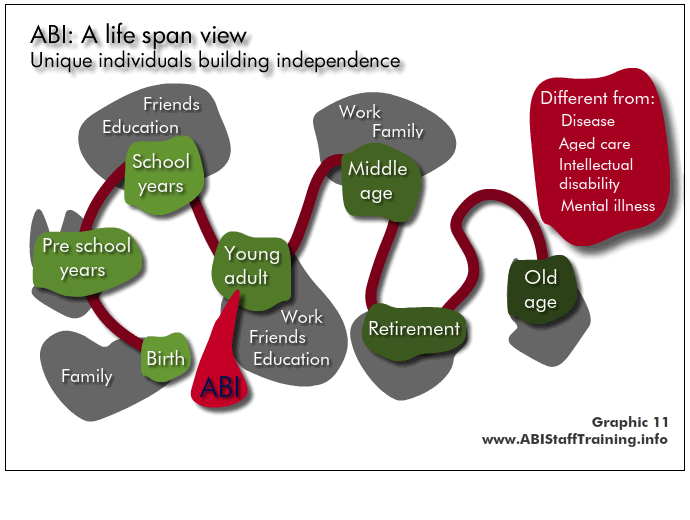- MODULE 2: Working with ABI
- Introduction
- Take the Pre-test
- A. Uniquely building independence
- a) Unique
- b) Injury-Effect-Behaviour
- c) Frontal lobe proxy
- d) Change happens
in the day to day - e) A life span view
- f) Person centred, Goal directed
- B. Through emotions and relationships
- g) Person with ABI
- h) Family members
- i) Grief and loss
- j) Support workers
- k) Managers and Team leaders
- l) Case managers
- m) Professional boundaries
- C. With services
- n) Pathways
- o) Part of a team
- p) The services network
- D. Principles and standards
- q) Principles and standards
- E. Integration
- r) Practice tools
- s) Case study
- t) Further learning
- Take the Post-test
e) A life span view 
Building independence: take a life span view
Individuals have a life before the ABI.
They have a life after the ABI.
Rehabilitation is part of their life after the ABI.
See each individual with an ABI within the context of their life span, the time before their injury and the time after they get their injury.
SLIDES: To pause: Hover mouse over slide. To continue: move mouse off slide.
To go to a specific slide: Click on slide numbers below.
Click on Young Adult to click through the screens.
ii) Life span view
Working with people with ABI requires a life span approach.
A life span approach is about creating clear long term pathways for people. It involves having the right interventions at each point in a person's life to build their strengths and enable them to participate in and contribute to their communities.
The lifespan approach focuses on a number of significant life stages and transition points. For example:
- working with a secondary student with an ABI would focus on working more intensively with the education system to maximise development of vocational and life skills.
- working with a young person with an ABI who has left school might have a key objective to ensure their life and vocational skills are optimally developed for as independent a life as possible.
- working with adults with ABI ongoing community access services and flexible respite options may be important to support people to continue participating and living in their communities.
